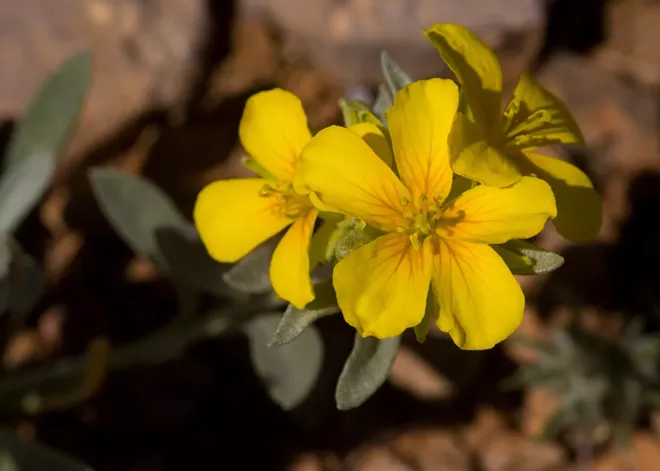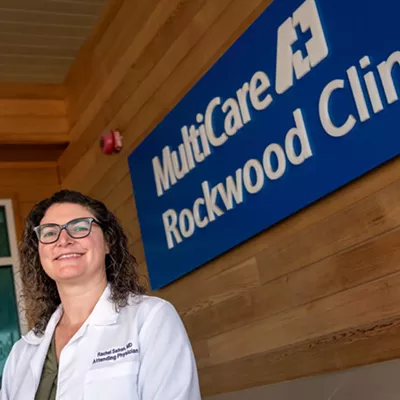Rudolf Diesel patented his version of the internal combustion engine in 1892. He's the namesake for diesel fuel, which today is mostly made from refined crude oil. But Diesel's original engine ran on peanut oil.
Seed oils may be getting hate from the current health food industry, but they are ripe with promise to replace petroleum-based fuels, as well as lubricants, industrial-grade adhesives and other vital materials.
"The big picture here is that with the increasingly growing human population ... there's a higher demand to replace petroleum with renewable fuels, which do not affect the environment as much," says Phil Bates, an associate professor of biological chemistry at Washington State University. "The carbon that is burned when you burn [seed oil] is recaptured by the plants, and they then make the oil again. It's sort of a recycling versus pulling something from the ground and just burning it."
There's plenty we still don't know about how plants produce oil, Bates says. But that knowledge is critical if the biofuel sector wants to increase the yield and profitability of nonfood oil crops such as Camelina or castor.
Thanks to a recent discovery by Bates and his lab, which studies molecular plant science, researchers now know a whole lot more.
Along with researchers from the U.S. Department of Agriculture (USDA), Bates' team discovered a previously unknown oil production mechanism in Physaria fendleri, a plant that makes an oil similar to castor oil. Without getting too deep in the weeds, the gist is that the common perennial native to Mexico and the American Southwest can change the composition of its oil even after the initial substance has already been created.
That's a big deal.
Knowing this mechanism exists opens up new questions and possibilities: Do other plants do this? Could you genetically modify any plant to change its oil into something it otherwise wouldn't produce?
Answering these questions could put scientists closer to increasing seed oil production enough to compete with and maybe even replace petroleum. But to do that, the world needs a lot of seed oil.
Oil does far more than fuel our transportation. Lipids, the technical name for oils, are in just about everything.
"I got interested in lipids because they're essential to life," Bates says. "You can't have a cell without lipids. But also there's very useful things that you can make out of lipids. The goals in my lab are to better understand how plants make different types of lipids, and how we can then use that information for societal gain by either breeding or engineering plants that have different properties that we can use."
The WSU team's discovery, which was published in April, could affect not only cars, planes, buses and trains, but even the fight against bioterrorism.
THE OIL TO END ALL OILS
Castor oil has been used for everything from inducing labor to lubricating equipment on high speed trains. It can be found in brake fluids, inks, paints and plastics, and also in cosmetics and soaps. Historians say ancient Egyptians used it as a skin and hair moisturizer, a medicine, and a laxative.You can find bottles of it in an aisle of your local beauty store — and it's also probably in the plastic shopping basket you're carrying and the car you took to get there.
Because of its nearly endless uses, castor oil is always in high demand, making it a lucrative commodity. In 2023, the castor oil market was estimated to be worth over $2 billion.
But here's the catch — after the oil is extracted from castor "beans" (which are really seeds), the grainy byproduct contains a toxin called ricin.
The Centers for Disease Control and Prevention considers ricin one of the most toxic biological agents known to science, and both a bioterrorism and chemical warfare weapon. According to the USDA, it is seven times more deadly than cobra venom. Ricin gets into cells and stops them from producing the protein they need. A few milligrams can kill a human adult.
The white powder has been used in Russian assassination attempts and was featured in a famous episode of Breaking Bad. In 2013, Spokane made national news when the FBI arrested a 38-year-old man for sending ricin-laced letters to a federal District Court judge, the Riverside Post Office, Fairchild Air Force Base, the CIA and then-President Barack Obama.
Castor oil fell out of large-scale production in the U.S. in the 1970s to stem access to castor mash and its deadly possibilities. Today, nearly 90% of the world's castor is grown and processed in India.
After the U.S. stopped producing castor, the USDA started researching how to produce a similar oil without the lethal byproduct. Their researchers have been working for decades to genetically engineer castor or replace it with a similar plant oil.
Their work led them to Physaria fendleri — that's right, the same one Bates has helped study — which produces an oil very similar to castor but hasn't been domesticated yet.
Armed with this new knowledge from WSU about how the plant works, the USDA might actually be able to bypass the decades-long process of domesticating a wild plant into an agricultural crop. Instead, they might be able to genetically alter crops that are already domesticated to make the unique oil that Physaria fendleri does.
"By understanding the process of how some of these plants make these things, we can try to replicate that in another species," Bates says.
One promising new seed oil plant is Camelina sativa, a nonfood crop introduced to Montana in the early 2000s. Today, there are about 20,000 acres dedicated to growing Camelina, which is used to make biodiesel and feed supplements for livestock.
Could Camelina be genetically altered to make an oil that could replace castor oil, making the industry more competitive and less dangerous? Bates is a researcher, so he's reluctant to make such grand claims.
"Ten years will tell us, right?" Bates says. "We like to believe that we're opening up a new direction, whenever we discover something that's very new or very different [...] Now we know we have new targets. Is it gonna be the thing that makes a huge difference? Time will tell, but it definitely gives us new research directions and new places to go." ♦




















